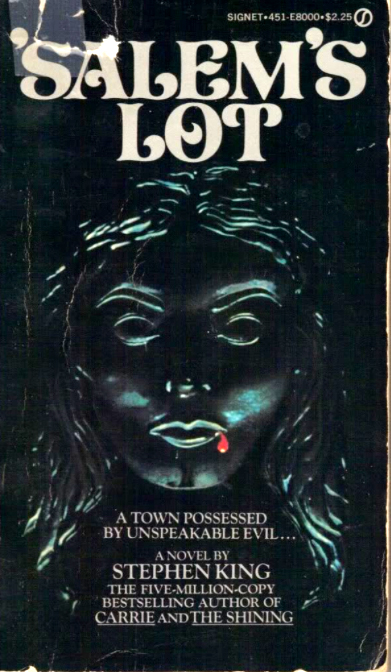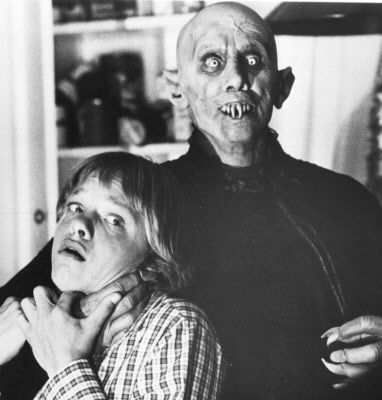Scariest Books of All Time, Part 2
 This is the second in an autobiographical series. Part one is here.
This is the second in an autobiographical series. Part one is here.
Well, you had to know Stephen King would make at least one appearance.
I can't remember if Salem's Lot or Carrie was the first book I read by King, but it was definitely Salem's Lot that made me realize that horror was not something confined to the old, dusty books I found in the library with their archaic prose and understated creepiness. King's horror was fresh, intensely modern, and packed a mean punch. Who would have thought that vampires, long relegated to black-and-white movies on late night TV, could actually scare the bejesus out of 20th century adults?
Equal parts haunted house story, classic vampire tale, and chronicle of the death of small town America, Salem's Lot is perhaps singlehandedly responsible for my desire to write horror fiction. I didn't just read the book, I immersed myself in it like Countess Bathory in a bathtub of virgin blood, re-reading it several times over the course of my early adolescence until I could quote chunks of it by heart. Part of the attraction was the character of Mark Petrie, a monster-obsessed kid (just like me!) whose knowledge of vampire lore, and ready access to a plastic cross on one of his Dracula models (just like I had!) saves him from being bitten by one of his newly vampirized pals. Later, when Petrie was played by Disney staple Lance Kerwin in the excellent TV miniseries adapted from the book, I couldn't have been more pleased. Kerwin had become a hero of mine for his role in the TV series James at 15, when he disrobed in a sleeping bag with Melissa Sue Anderson (of Little House on the Prairie fame)—a scene I credit with drop-kicking my pre-pubescent self into hormonal overdrive.
But I'm digressing.
That book seriously scared me. I didn't sleep with the lights on, and I didn't take to wearing a crucifix to bed. But that feeling some of us get (I suspect you're one of us if you're reading this)—the weird frisson of fear that hits the pleasure receptors and the fight-or-flight response with equal intensity—was evoked more powerfully in that book than any other I'd ever read. It was modern, it was as real as real could get, and yet there were vampires slowly infesting a town under cover of darkness. Horror wasn't just old, cobwebbed mansions in the British countryside, a lumbering Frankenstein's monster, or a gauzy ghost passing by an open door. Horror was here, now, right outside my bedroom window. Tapping on the glass and asking to come in.
Around the time I read Salem's Lot I asked my parents for a typewriter for Christmas. I vividly remember sitting on the floor of my bedroom in front of that typewriter, feeding in a sheet of onionskin paper, and starting my first novel one key-peck at a time. In the first chapter, a man became a vampire by pledging his soul to the devil. I used actual words from a Satanic ceremony I'd found in Hans Holzer's The Truth About Witchcraft, and I remember worrying that by typing the Latin words I might be putting my young soul in jeopardy. In the second chapter, the vampire raided a blood bank in a hospital and gorged himself on bags of delicious plasma. He gets caught, mouth dripping blood, and chased onto the roof by a guard. He throws the guard off the roof to his death (naturally) before slinking off into the night in search of further victims.
I remember how reading my own words scared the living crap out of me. And how strangely new and exciting that was.
I never got to chapter three. But it didn't matter. I looked at those typewritten paragraphs, single-spaced, on those three sheets of paper and I was hooked.
'Salem's Lot
In the mood for more? Check out part 3.

